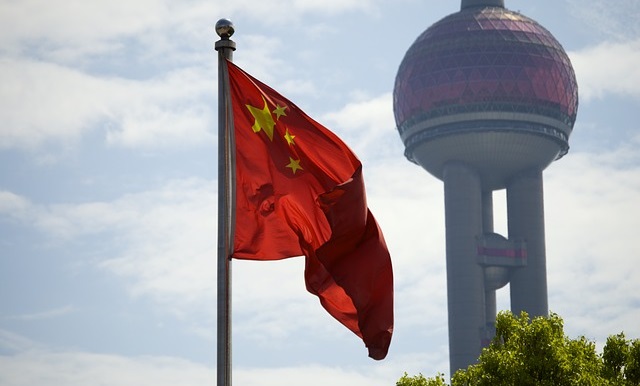China’s Keynesian Experiment
While President Trump nags the Federal Reserve to reinstitute Obama-era monetary stimulus, China has already taken off down that path. And it actually has some people in the mainstream concerned.
According to a Reuters report, the Organisation for Economic Cooperation and Development (OECD) is warning that while Chinese government stimulus may boost the country’s economy in the short-run, it “may undermine the country’s drive to control debt and worsen structural distortions over the medium term.”
Sound familiar?
The Chinese economy has been slowing in recent months due to weaker domestic demand and the ongoing trade war with the US. In an attempt to boost the economy, the Chinese government has launched a massive stimulus program. According to Reuters, local government will be allowed to issue $320.6 billion in bonds for infrastructure projects this year. The would represent a 59% increase over last year.
Overall, China’s fiscal stimulus could climb as high as 4.25% of GDP this year, up from 2.94% in 2018, according to the OECD.
This is the typical Keynesian response to an economic slowdown. We’ve seen it before. The Obama administration launched a massive stimulus program during the Great Recession – much of it targeted at infrastructure spending. But the money from these projects doesn’t rain down from heaven. It has to be borrowed. That means it must be paid back. According to S&P Global Ratings, local governments in China are already sitting on as much as $49 trillion yuan ($560 billion) in debt.
The US faces a similar problem after nearly a decade of both government and central bank stimulus. While mainstream pundits and talking heads cluck about great jobs number and amazing economic growth, by and large, they completely ignore the fact that the entire economy is built on giant piles of debt.
The OECD also raised concerns about “misallocations” caused by all of this economic stimulus.
Infrastructure stimulus could lift growth over the projection horizon, but it could lead to a further build-up of imbalances and capital misallocation, and thereby weaker growth in the medium term.”
You will always end up with misallocations of resources when governments spend money. Lacking market guidance, stimulus money gets allocated through the political process. That means it often gets spent on useless projects for the benefit of the politically connected. You end up with things like “bridges to nowhere.”
Flooding the economy with money printed out of thin air also more generally leads to malinvestments. In fact, skyscraper construction driven by artificially low interest rates and stimulus money can predict economic crashes, as economist Mark Thornton has shown. This is a fundamental aspect of the business cycle.
In addition to running up government debt, government stimulus can indirectly lead to a rise in corporate debt. Chinese corporate debt already stands at 160% of the country’s GDP.
In March, the Chinese government announced tax and fee cuts of 2 trillion yuan for companies this 2019.
In another move that will sound familiar to Americans, the Chinese government is pushing banks to loosen lending standards. From Reuters:
But there are concerns that looser lending standards may fuel a further rise in bad loans as well as inefficient investment and speculation, particularly in the property market. Underscoring the OECD’s warning about debt risks, data on Tuesday showed growth in new home prices accelerated in March after cooling since November 2018. Average new home prices in China’s 70 major cities rose 0.6 percent, quickening from a 0.5 percent gain in February, according to Reuters calculation of data released by the National Bureau of Statistics (NBS). Home prices in China are expected to rise more this year than predicted just a few months ago, a recent Reuters poll showed, as the government urges banks to increase lending and lower interest rates to support the economy.”
But really, what could go wrong?
It’s interesting that a mainstream international economic body is expressing concern about this Keynesian stimulus program in China and that Reuters reported on it. But it is also telling the government officials have not learned any lessons from the past. We see the same thing here in America with President Trump’s call for the Fed to launch more QE. Keynesian “cures” aren’t going anywhere.
As Peter Schiff said in a recent podcast, “Every time [politicians] make the problems bigger by kicking the can down the road, there’s more political motivation to kick it again. Because the worse the problems are, the more painful is the resolution and of course, nobody wants to be blamed. Nobody wants to be the messenger that gets shot full of holes because they deliver the bad news.”
Get Peter Schiff’s most important Gold headlines once per week – click here – for a free subscription to his exclusive weekly email updates.
Interested in learning how to buy gold and buy silver?
Call 1-888-GOLD-160 and speak with a Precious Metals Specialist today!





 Since Nayib Bukele became president of El Salvador, El Salvador has been in American media and global political discussion more than ever. While much of the attention focuses on Bukele’s mass incarceration of gang members and a decline in homicide of over 70%, Bukele has also drawn attention to his favoritism towards Bitcoin and how he […]
Since Nayib Bukele became president of El Salvador, El Salvador has been in American media and global political discussion more than ever. While much of the attention focuses on Bukele’s mass incarceration of gang members and a decline in homicide of over 70%, Bukele has also drawn attention to his favoritism towards Bitcoin and how he […] With gold hitting yet another awe-inspiring all-time high in the wake of Powell’s remarks reassuring markets (more or less) to expect rate cuts in 2024, a few analysts are pointing out risk factors for a correction — so is there really still room to run?
With gold hitting yet another awe-inspiring all-time high in the wake of Powell’s remarks reassuring markets (more or less) to expect rate cuts in 2024, a few analysts are pointing out risk factors for a correction — so is there really still room to run? Gold hit a new all-time nominal high, surpassing the previous record set in December of the previous year. The precious metal’s price reached approximately $2,140, indicating a robust and continuing interest in gold as a safe-haven asset, despite a rather peculiar lack of fanfare from the media and retail investors. This latest peak in gold […]
Gold hit a new all-time nominal high, surpassing the previous record set in December of the previous year. The precious metal’s price reached approximately $2,140, indicating a robust and continuing interest in gold as a safe-haven asset, despite a rather peculiar lack of fanfare from the media and retail investors. This latest peak in gold […] The gold price has been surging, with unprecedented central bank demand gobbling up supply. It has been a force to behold — especially as US monetary policy has been relatively tight since 2022, and 10-year Treasury yields have rocketed up, which generally puts firm downward pressure on gold against USD.
The gold price has been surging, with unprecedented central bank demand gobbling up supply. It has been a force to behold — especially as US monetary policy has been relatively tight since 2022, and 10-year Treasury yields have rocketed up, which generally puts firm downward pressure on gold against USD.  Total gold demand hit an all-time high in 2023, according to a recent report released by the World Gold Council. Last week, the World Gold Council (WGC) released its Gold Demand Trends report, which tracks developments in the demand for and use of gold around the world. Excluding over-the-counter (OTC) trade, 2023 gold demand fell slightly from 2022 […]
Total gold demand hit an all-time high in 2023, according to a recent report released by the World Gold Council. Last week, the World Gold Council (WGC) released its Gold Demand Trends report, which tracks developments in the demand for and use of gold around the world. Excluding over-the-counter (OTC) trade, 2023 gold demand fell slightly from 2022 […]